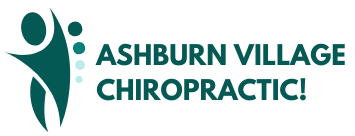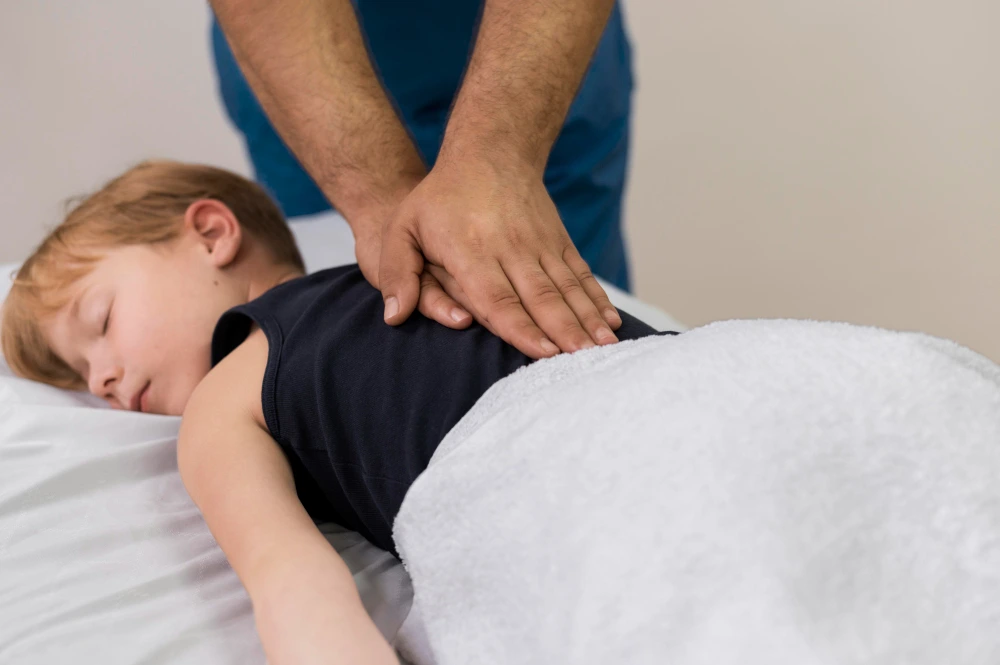Are Chiropractic Adjustments Safe for Kids
For parents asking, Are chiropractic adjustments safe for kids, the answer is yes when delivered by trained chiropractors. Safety starts with thorough history, examination, and clear referral thresholds. Techniques use gentle mobilization, instrument taps, and precise dosing matched to age and diagnosis. Most children experience only mild soreness or fatigue that settles within two days. Parents learn warning signs that require medical review, including fever, night pain, and new weakness. Guidance covers when toddlers may benefit, home strategies, and how to choose a qualified provider. The focus remains on comfortable chiropractic care, measurable goals, and coordinated communication with your pediatrician.
Safety Overview For Pediatric Chiropractic Care
Safety is a structured process, not a single technique. Each visit at Chiropractor begins with a detailed history and examination. Chiropractors review birth history, injuries, medications, and current symptoms. Red flags are screened, including fever with spine pain and progressive weakness. Unexplained weight loss or night pain also prompt medical referral. Imaging is reserved for trauma, infection suspicion, or failed conservative care. Technique and force are selected after assessing age, size, and tissue tolerance.
Gentle contacts and controlled mobilization by chiropractor are preferred for kids. Consent is discussed with parents and age appropriate assent is sought. Parents are invited to observe and ask questions throughout care. Outcomes of chiropractic care are tracked using pain, function, and activity measures. Contingency chiropractic plans are in place if symptoms worsen or change. This framework addresses the question Are chiropractic adjustments safe for kids with clear safeguards.
What A Chiropractic Adjustment Means For Children
A pediatric adjustment is a light, controlled input to a joint. It aims to restore natural glide without forcing range. For infants and toddlers, touch is very gentle and brief. Many visits use mobilization, sustained holds, or instrument assisted taps. These methods reduce irritation around joints and soft tissues. They also calm protective muscle guarding that limits motion. Pediatric chiropractic focuses on comfort, consent, and clear communication. Parents stay involved and can observe or hold younger children. Chiropractic for kids should feel safe, respectful, and reassuring.
How Safety Depends On Age Condition And Technique
Chiropractors calibrate chiropractic care in real time using a test treat retest method. A brief input is followed by a movement check. If discomfort rises or control decreases, the technique is changed or paused. Objective cues guide dosing, including range, balance, coordination, and strength. Diagnosis shapes the plan more than age alone. Hypermobility benefits from stabilization and very small arcs. Acute sprain care uses pain free motion only. Persistent stiffness allows graded loading within comfort. Visits are spaced to support tissue recovery and reduce soreness.
What Age Can a Child Go To A Chiropractor
Children can visit a chiropractor at any age when evaluation supports it. The question Are chiropractic adjustments safe for kids is addressed through age matched techniques and careful dosing. Decisions consider growth stage, diagnosis, and goals. Session length, contact pressure, and vector are scaled to body size. Parents remain present and informed during planning. Progress is measured with function, comfort, and participation in routines.
Considerations For Infants, Toddlers, School Age and Teens
Infants benefit from fingertip contacts and slow holds. Sessions are brief and often performed while swaddled. Goals include comfortable head turning and relaxed feeding positions.
Toddlers need clear visual cues and simple counting. Care uses gentle mobilization with neutral positions and play. Targets include smoother walking, easier floor play, and steadier sleep.
School age children balance sports, backpacks, and longer sitting. Techniques stay low force with short precise thrusts when indicated. Education covers device ergonomics, reading height, and scheduled stretch breaks.
Teens tolerate a broader mix as skeletal maturity progresses. Plans pair clinic work with strength, flexibility, and recovery habits. Targets include pain control, training load tolerance, and confident performance.
How Do I Know If My Toddler Needs A Chiropractor
Parents can observe daily activities for signs that suggest evaluation. A child who avoids climbing or squatting may be uncomfortable. Favoring one arm or leg can indicate joint irritation. A constant head tilt that does not change needs review. Night waking after rolling may reflect movement pain. Frequent falls across several days also matter. If symptoms persist beyond one week, schedule an assessment. Are chiropractic adjustments safe for kids is addressed during that visit with age matched chiropractic care.
Signs Of Musculoskeletal Pain In Kids
Toddlers often show pain through behavior rather than words. Wincing during dressing or lifting suggests discomfort. Refusal to crawl, climb, or reach as usual is notable. Persistent toe walking beyond a brief phase needs attention. Protecting one arm during play may indicate irritation. Stiffness after naps or car rides can be significant. Swelling, fever, or night pain requires medical evaluation first. After clearance, chiropractic care for kids focuses on comfort and function.
When Posture Or Sports Strains Need Attention In Kids
Children’s developing spines are stressed by long sitting, heavy backpacks, and early sports participation. Rounded shoulders that do not correct with gentle cues need review. Neck or upper back pain after backpack use is not typical. Recurrent heel or shin discomfort during play suggests overload. Uneven shoe wear may indicate movement imbalance. Short breaks and simple mobility drills should help within two weeks. If symptoms continue, pediatric chiropractic care can guide alignment and recovery. Pediatric chiropractic supports safe return to play and daily routines.
Are There Side Effects Or Risks For Kids
Most children experience mild, short lived reactions after gentle chiropractic care. Soreness or fatigue can appear within a few hours. These effects usually resolve within twenty four to forty eight hours. The question Are chiropractic adjustments safe for kids often centers on after visit reactions. Pediatric chiropractic care uses precise dosing that matches age and tissue tolerance. Light activity, good hydration, and regular meals support recovery. Parents can note changes in comfort, sleep, and play for the next visit.
Common Short Lived Reactions After Gentle Adjustments
Temporary muscle soreness is the most frequent response. Some children feel sleepy or peacefully relaxed after the visit. A mild headache can occur as tight areas begin to ease. Older children may feel a brief stretch sensation with movement. Gentle walking and easy range exercises help stiffness resolve. Fluids and a calm evening routine support normal recovery. Chiropractic care for kids aims for comfort first and steady progress.
Warning Signs That Need Medical Review
Seek medical advice if pain escalates instead of settling after two days. Fever with spine pain or widespread illness signs needs prompt care. New numbness, tingling, or weakness requires medical assessment. Repeated night pain that wakes the child deserves review. For toddlers and infants, watch for refusal to bear weight or use a limb. Persistent limp, poor feeding, or unusual drowsiness also need attention. Pediatric chiropractic works alongside medical care when these signs appear.
Why Do Some Doctors Discourage Chiropractic Care
Some physicians express caution for several reasons. Training in pediatric chiropractic varies between providers. Some worry that high velocity thrusts could be excessive for small joints. Others note limited research for non musculoskeletal complaints. Communication gaps between clinics can also raise concern. The question Are chiropractic adjustments safe for kids often underlies these reservations. Clear standards and shared plans help address them.
Typical Concerns About training and Force
Doctors expect formal pediatric training and clear referral habits. They want assurance that chiropractors recognize red flags quickly. Force is another concern in chiropractic for kids. Critics fear excessive loading on immature joints and growth plates. Many also question documentation and informed consent processes. They prefer conservative indications and measurable outcomes. These expectations reflect common medical standards for children.
How Evidence Based Pediatric Techniques Reduce Risk
Pediatric chiropractic care reduces risk through precise dosing and clear scope. Techniques use small amplitude contacts, gentle mobilization, and brief spring loaded taps. Inputs are scaled to age, size, and tissue tolerance. Movement is rechecked after each step to confirm a safe response. Plans focus on musculoskeletal conditions with functional goals parents understand. Informed consent and age appropriate assent are recorded before treatment. Outcome charts track balance, range, and daily abilities over time. Referral thresholds are defined for worsening symptoms or new neurological signs. Regular communication with the child’s physician supports safe coordinated chiropractic care for child.
How To Identify A Good Pediatric Chiropractor
Start with credentials. A strong provider holds a current state license and national board certification. Ask about postgraduate coursework focused on pediatric chiropractic care. Confirm experience with infants, toddlers, school age children, and teens. Request examples of age specific modifications used during chiropractic for kids.
Safety needs clear protocols. A good chiropractor gains informed consent in plain language. Techniques use age matched dosing with test, treat, and retest steps. There are written stop rules if symptoms worsen or control drops. Referral thresholds are defined for neurological or systemic concerns.
Communication should be direct and supportive. Parents remain present during sessions. Explanations use simple terms that children understand. Home guidance arrives in writing with timelines and targets. Outcome tracking includes functional goals that matter at home and school. These standards help families answer the question Are chiropractic adjustments safe for kids with confidence. They also guide smart choices about chiropractic care for kids without unnecessary risk.
Pediatric Chiropractic At Ashburn Village Chiropractic
Dr. Jonathan Solomon has provided chiropractic care in Ashburn since 2000. He sees patients personally at each visit for consistent follow up. His education includes a Doctor of Chiropractic degree, cum laude, from Life Chiropractic College. He also holds a Bachelor of Arts from Rutgers College. He is licensed by the Virginia Board of Medicine and is nationally board certified. Professional memberships include the Virginia Chiropractic Association and the American Chiropractic Association.
Care plans are individualized after a focused history and examination. On site imaging is available when clinically appropriate. Techniques are gentle and matched to growth and comfort. Families can schedule a consultation by phone or the website request form. A complimentary fifteen minute consultation is available for new families.

